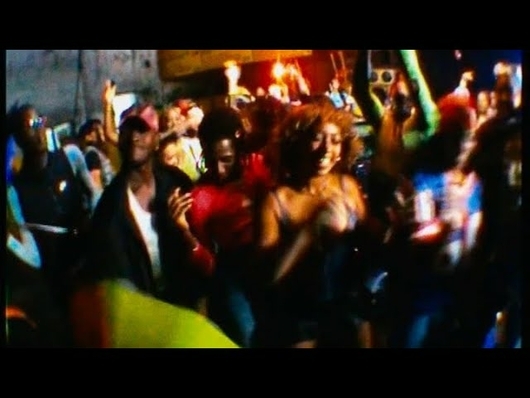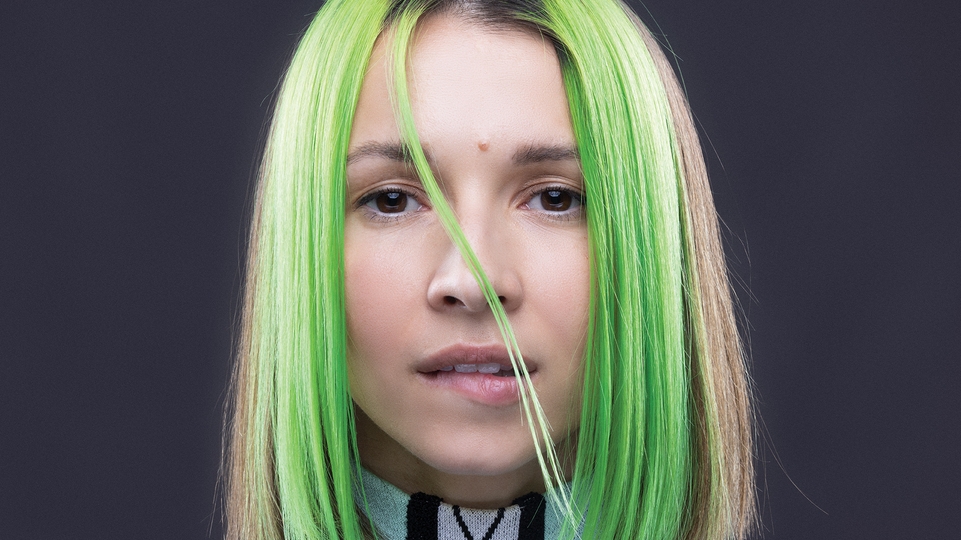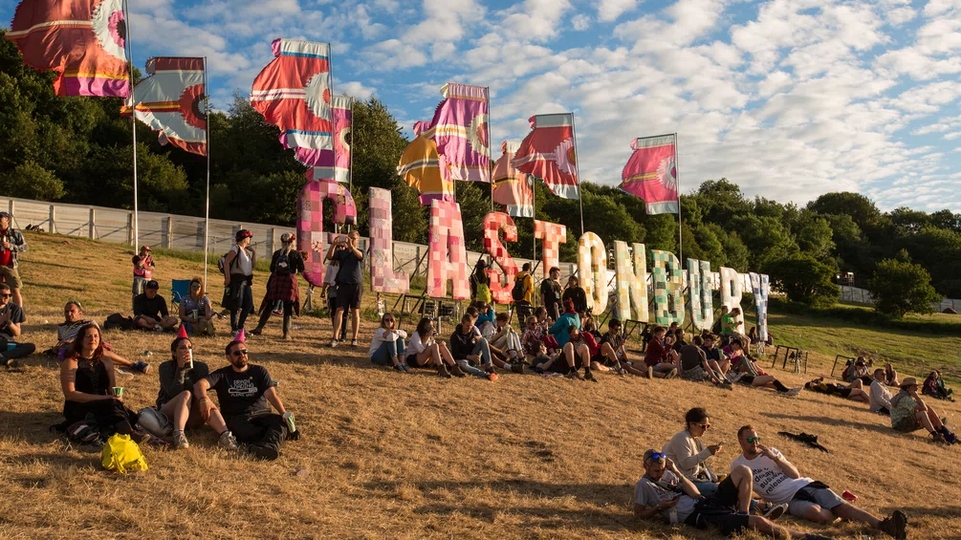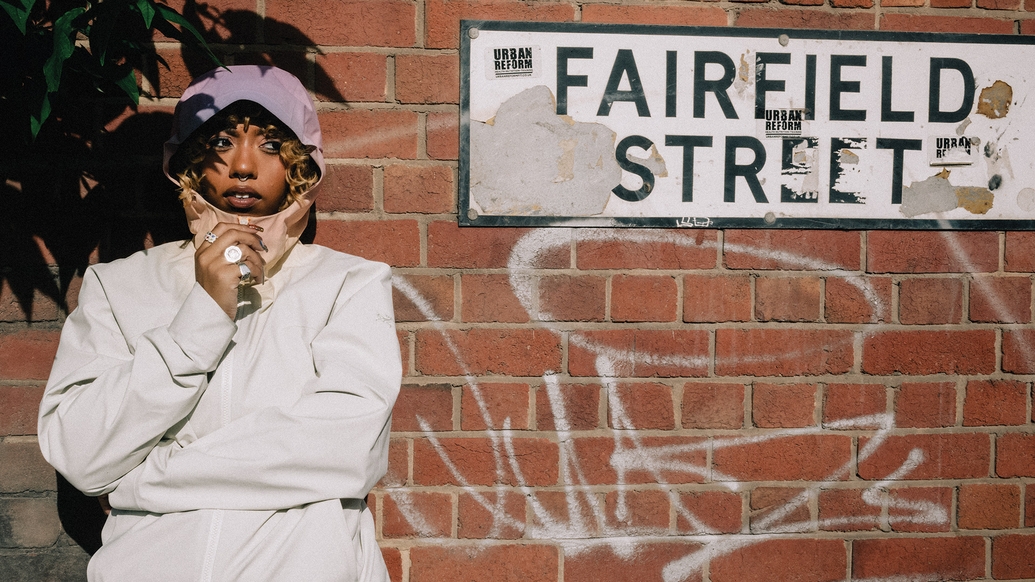
Nia Archives: one for the headz
Nia Archives is a jungle sensation. Since exploding onto the scene just two-and-a-half years ago, she’s won multiple awards, become a festival headliner, and racked up millions of plays with a deeply personal take on the genre that also pays homage to its Black pioneers. Life’s not always been easy, and she’s had to become hyper-independent to survive and progress, but now she’s rewriting her story. Christine Ochefu learns about Nia’s upbringing, her love for everything ’90s, and how she’s creating space for young Black women to thrive in electronic music
A couple of years ago, if you had told the average raver that a jungle artist would be competing at the BRITs in 2023, they probably would have laughed you out the room. That is, until the advent of Nia Archives. When we speak, she’s calling from LA, during a snippet of time she has prior to making her way to San Francisco for the next stop on her US tour. It’s part of a global footprint she has established in the past year, meeting new fans as far away as Asia, a show run she grins at the mere mention of. The 24-year-old is thoughtful and passionate in speech, despite just recently waking up. It’s almost cliché to ask how it all feels. “Every time I come here I have no expectations,” she says in her broad West Yorkshire lilt. “But this time, things feel different.”
It’s Nia’s third time in the US, where she tours her Up Ya Archives curated club nights, accompanied by the likes of Canadian artist SadBoi, and friend and longtime collaborator IZCO. It can be difficult for specialist genres to translate in regions where they’re not traditionally part of the musical DNA. But this time, she’s feeling it resonate. “It feels like people are more aware of jungle. It’s exciting because it's not really part of their culture as much, but they're discovering something to be a part of.”
Only a few years back, Nia’s career was starkly different. This writer recalls a showcase in mid-2021 held at Rich Mix Shoreditch dubbed All Purpose; a free-entry event designed to uplift members of the Black community. There, one could catch a set from a then-up-and-coming Nia Archives, tentatively singing and playing her buzzy, high-intensity jungle tracks to a seated audience of around 30 people max. It was ‘before the fame’ as one might say; she was a little shyer back then, balancing university, a job at Wetherspoons and “delusional” dreams of making it in the music industry. “I was definitely still trying to figure out how to use the CDJ at that time,” she smiles.
Since then, Nia has had a trajectory most artists could only dream of. She has become prominent not just in electronic music, but everywhere. Since dropping her ‘Headz Gone West’ EP in 2021, she’s amassed an army of listeners on the jungle circuit and in the mainstream, winning over ears with the cutting-edge production style and tone on later tracks like ‘Forbidden Feelingz’ and ‘Baianá’.
In 2022, she was widely considered one of the year’s most prominent up-and-coming artists: she bagged a BRIT nomination for Best Rising Star, and won Breakthrough Producer at DJ Mag’s Best Of British awards, Best Producer at the NME awards, and a MOBO. This year she’s been an unyielding presence on the live circuit: headlining at We Out Here and Outlook Croatia, performing at Coachella and Glastonbury, taking her own curated parties on tour across the UK and internationally. As we go to press, she’s just sold out her biggest one to date — a 10,000-capacity Warehouse Project takeover in Manchester — and she even supported none other than Beyoncé during her London run of shows.
How would she sum it up? “Yeah, that was a bit mad,” is where she eventually settles. She is maddeningly humble during our call, despite reams of blinding success. It’s in an effort to avoid getting “lost in the sauce”, a mantra she’ll reach for numerous times throughout our conversation. “Social media is the highlights, there’s a lot behind that,” she says. “It really is extreme highs and extreme lows. Music is an unusual career choice; the situations you find yourself in are not very normal. But that’s a part of life, you can't always be happy. I'm trying to find more of a neutral balance, somehow.”
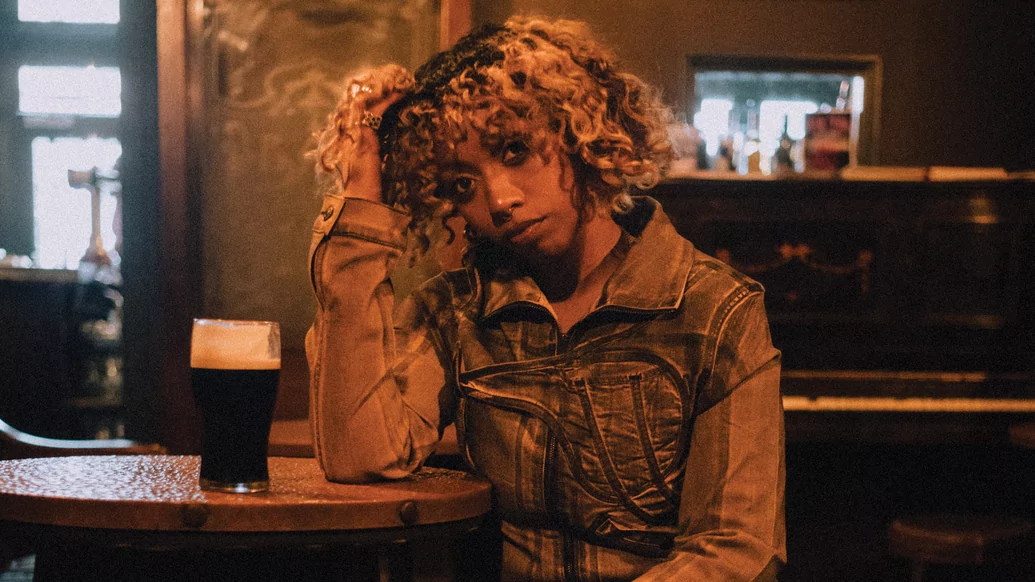
“People that don't know much about the genre might think [the sound] is one specific thing; it's actually so open. They made so much amazing music on top of the breakbeats; it wasn't like it had to be dark club music to be jungle”
Nia Archives is one of the most prominent young faces in the modern jungle scene. In her own words, a “new-gen junglist”, whose energetic tracks pack raucous drum breaks under trademark soft, lilting vocals, her music has found itself the perfect rallying cry for a new wave of fans discovering the genre. They are young teens, primarily of the digital generation, getting glimpses of jungle via social media, effervescent sped-up TikTok tracks, and new artists riffing off samples and cracked drum patterns from jungle and drum & bass classics. Their heroes are often somewhat removed from the traditions of the music they reference — maybe a sample here and there, but not quite fully jungle or drum & bass — such as the likes of PinkPantheress, piri & tommy, and venbee, who all exploded over the Covid lockdown.
But Nia is much more inspired by jungle’s roots, taking direct influence from elders of the genre and holding a near-encyclopaedic knowledge of its origins, culture and expansion. Inspired directly by the sound’s foundational era — the '92-96 years, when pioneers like Dillinja, Roni Size, Lemon D, Shy FX and more proliferated — Nia has utilised similar production techniques more than many of her mainstream peers. Take ‘Baianá’, a reworking of a sample of Brazilian group Barbatuques inspired by DJ Patife’s iconic ‘Sambassim’ remix, and a thundering forest fire among her catalogue. Or ‘18 & Over’, where she flips part of Cocoa Tea’s ‘Young Lover’ into classic ragga jungle, and ‘Mash Up The Dance’, which sees her flexing her patois and chanting down Babylon over production from Watch The Ride — the group itself featuring genre legends Randall and DJ Die.
Yet, the tracks that thrust her to stardom dance between harder, more production-focused sounds and easy listening. This summer’s popular ‘Off Wiv Ya Headz’ sees her chop up the Yeah Yeah Yeah’s ‘Heads Will Roll’, turning it into a ravey weapon with her signature tumbling breakbreats, while ‘So Tell Me...’ might be a yearning indie song disguised in jungle packaging, complete with muted string section.
“People that don't know much about the genre might think [the sound] is one specific thing; it's actually so open. They made so much amazing music on top of the breakbeats; it wasn't like it had to be dark club music to be jungle,” she says, listing off subgenres like atmospheric jungle, IDM, and Goldie’s forays into screamo and metal as references of the experimental ethos she funnels into her own work. Inadvertently, and perhaps surprisingly, her openness to experiment is something that’s given her undeniable crossover appeal. “On my last project, I had an indie song on there, a bossa nova song. Because it’s a certain tempo, it might not be classed that way,” she explains. “I see it as my take on jungle.”
And with her appeal comes intense positioning; she may have unintentionally been pinned as the face of an impending genre revival by music press and audiences. Though she is aware she is not the sole face within the scene — with the likes of SHERELLE, Tim Reaper, 4am Kru and Sully among those driving the current wave — she understands the keenness to pick out new faces. “I think jungle has been quite faceless for a long time,” she says tentatively. She points to the rise of another figurehead, Goldie, now one of her close mentors and friends. “He's one person that’s a household name internationally. He crossed over in the ’90s and he's kept that for the past 30 years.”
A video of the two embracing each other during her set at GALA Festival felt a bit like a metaphorical passing of the mantle, and she is aware of the shared markers that have made them both stick out. “I see some similarities in my own musical path. We both make music that's kind of weird and different, coming from lived experiences as we both come from difficult backgrounds. And among the other producers, I look different. I dance different. I talk different. I'm from the North — I'm a bit of an odd one out,” she ponders in real-time. “Maybe that has helped me be spotted, in a way.”
Another difference: her love for essential '90s jungle culture, evident in her style, marketing and presence as an artist. Nia follows the movements of her genre forefathers almost down to the letter: testing vinyl dubplates in clubs, incorporating rave posters and imagery in her visuals, capturing her tour via grainy VHS video camera footage, holding secret-location events that hark back to the heyday of illegal raves. “I reference the past all the time,” she says, “all the things they did in the '90s, I think is so cool. I love the way everyone used to dance, we kinda lost that in my generation.” Thus, anyone visiting a Nia Archives set will be met with the sight of her dancing jubilantly in front of her audience. “It's really hard to stand still to 170bpm music,” she giggles.

"You got to take the rough with the smooth. As long as you're playing the music you want to play, with the people that do come, skank out with them.”
Self-taught in all aspects of her artistry — production, vocals, DJing and beyond — hers is a confidence developed over time. “Everything’s been a learning curve,” she says. “From when I was at that All Purpose event, I did the whole underground jungle circuit — like, I did my time! I used to do the graveyard shift, five o'clock in the morning, playing the last set of the night on my own. I've done the hard DJ labour.” She points back to her first appearance at a venue she is now curating. “I played Warehouse Project in 2021, travelled six hours because there was traffic. And I played to two people,” she reveals. “At the time it was like, ‘Oh shit, only two people!’ But it helps keep you humble.
“I've been through sets where there's been 10 people there. I’m doing sets now where there's like 20,000 people there. But there might be a set where there’s 200 people; you got to take the rough with the smooth. As long as you're playing the music you want to play, with the people that do come, skank out with them.”
They’re all returns that have come from a wholesome desire to create a community — more so than just pick up new listeners. Nia explains how she uses her shows to provide little Easter eggs for fans sharing in the moment: dubs from her friends that can’t be heard elsewhere, as well as branded merch and trinkets, sometimes even at a loss to her financially. “I'm the same age as my audience. I want to be a part of their youth memories and give them things to have, something to look back on,” she says. “Sometimes artists can get a bit lost in the sauce; without those people you don't have anything. I still love giving away T-shirts and things because it's creating a real community. People that come to my shows, parties and pop-ups, I do start to see the same faces.”
Those young crowds also resonate with her knack for communicating the angst of youth. Nia’s catalogue of tracks is deceptively upbeat, but features diaristic lyrics on some of the hardest of subjects: body dysmorphia in ‘Luv Like’, dealing with insomnia in ‘Headz Gone West’, even familial estrangement in ‘So Tell Me...’. Nia is telling her story in real time. “Anybody can listen to it, even if they're not into the genre, because I'm singing songs that are real to my life. I hope people can feel the emotion.”
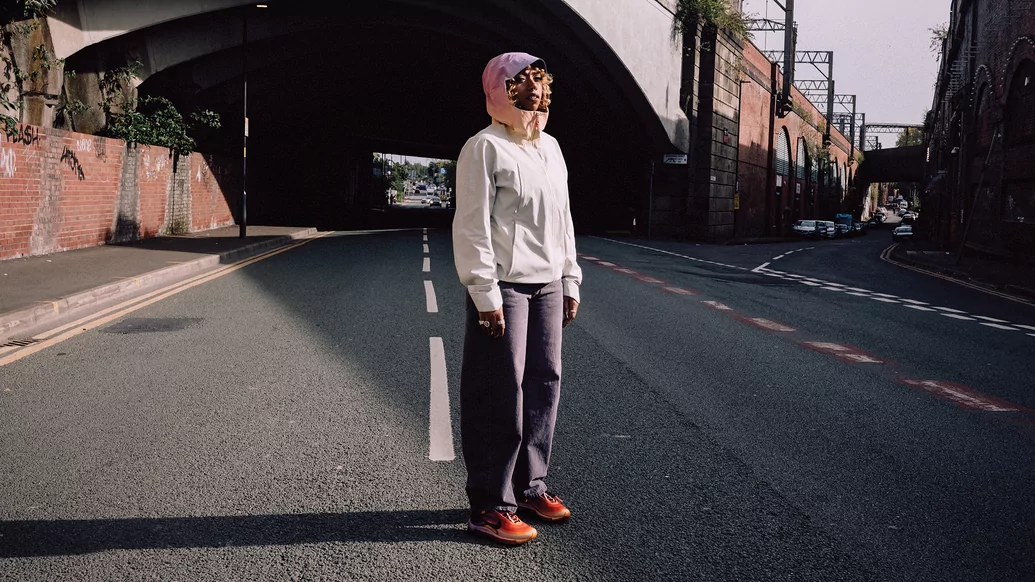
Nia grew up in Bradford, moving to Leeds with her family at the age of seven. She was quite shy as a child; a bookworm, with a taste for music, and “weird” in her own words. From young she’d been full of creative tendencies. She loved taking photographs and filming makeshift movies on a VHS camera gifted to her by her grandfather. Though music was a staple in her household, introduced by the multiple generations of women in her family, only Nia showed interest in creating and performing. “I kind of felt like the odd one out at some points in my life,” she says.
Her early home was a “melting pot” for sound. As a child her tastes ranged from the more conventional — the first CD she owned was Rihanna’s ‘Music Of The Sun’ — to the likes of Amy Winehouse, Roots Manuva, Rage Against The Machine and other ambitious listening. Of Jamaican and English heritage, living with her mother and two brothers, and with other aunts and generations of women in close proximity, her earliest memories include being gripped by the harmonies she’d hear at Pentecostal church, something she describes as a “musical awakening”. She became attuned to sound system culture via her family and Leeds West Indian Carnival, as well as via the radio show on Bradford’s BCB Radio that her aunt and grandmother hosted, playing rare groove, soul, disco and more, once even bringing a five-year-old Nia on to be interviewed about her day.
As early as eight she knew she wanted to be a singer. “To be fair, I also wanted to be an archaeologist,” she chuckles. But she had little clue on how to make music happen professionally. She was encouraged towards more vocational careers like social work, similar professions to some of the women in her family, such as her grandmother, who’d been a youth worker. “Even in schools, they don't really say, 'Oh yeah, you can be a musician’,” she says. “It's always, ‘But how are you going to pay the bills?’... I probably would have been good at [social work], but it’s not my passion, it never really interested me.”
She showed skills in music production as early as 12, and taught herself to play piano. Her stepdad at the time was a music producer who’d set up a studio in the house; West Yorkshire MCs like Lunar C would pass through to make music. She’d periodically be allowed to play around on Logic, making “really bad sounds”. “It was kind of mad,” she says tentatively. “To have all them rappers in my house... it definitely made sense as to where I'm at now, I guess. But it wasn't a normal childhood.”
It was a home life she simply describes as “turbulent”. Nia abruptly left her household aged just 16, at first moving to another area of Leeds. It wasn’t the safest environment by any means; alone, and underage, she’d be forced to hide her school uniform on her way to school, simply to avoid people clocking how young she really was. It was the first step in what would become familial estrangement. “I really just needed this change of environment,” she says. Leeds and Bradford are still a source of tense memories for her, and she currently doesn’t play shows in either city. “At this point in my life, I find it a bit too intense,” she says. “I'm very proud of where I've come from, but it's not necessarily the happiest place for me.”
She’d move solo again, first to Bury, then Radcliffe in North Manchester. It was a formative, but equally “challenging” time in her life. “I didn't really know anybody. I was living in a hostel at the time, on the dole. I had a social worker for a little bit but I didn't have much support.” Balancing shift work as a cookery teacher and in KFC with her day-to-day, dreams of music eventually circled back. “Music isn't really a choice in my life, it's more of an impulse. I thought I owed it to myself to give it a shot.”

In reality, her aspirations seemed far off. She struggled to get into mainstream clubs — she didn’t have ID for some time — instead frequenting squat raves and underground house parties, using her VHS camera as a means to strike up conversations and make friends. She’d exercise her musical muscles too, joining cyphers, jumping on the mic and singing freestyle, and she attempted to work with producers she’d met locally, but quickly became miffed at the runaround they gave her. Again, determination set in; she downloaded a cracked version of Logic and started making her own rap beats, at first low-tempo boom bap songs to articulate her emotions, the remnants of which still float around on SoundCloud.
She heard about a music course at Uni of Westminster through a friend, but was apprehensive about applying; she’d left school with minimal qualifications, and only had her portfolio of beats. In the end her talent spoke for her and she was accepted onto the course, moving to London to start the next chapter of her life. Sometime around then, her sound changed. Though her music remained a vessel for true-to-life subject matter, she was hit with a desire to speed it up. At first, she didn’t really know she was making jungle. It was only after spending time studying and understanding the roots that things clicked.
Nia went down digital rabbit holes, gorging herself on the stories and music of elders in the genre — particularly women like DJ Flight, Storm and the late Kemistry, whose presence as women in the scene greatly inspired her. She became obsessed, voraciously watching documentaries like the LTJ Bukem film Modern Times, the Talkin’ Headz Metalheadz doc, and Channel 4’s 1994 landmark, All Junglists: A London Somet'ing Dis. It was like a door opening in her mind, she explains, taking inspiration from “the visuals, the way they carry themselves, the culture and the dancing” to feed into her own music. She also took their self-starter attitude; over lockdown, she committed herself to making beats day in, day out, and eventually sent ‘Sober Feels’ to all the local jungle and drum & bass labels — not one of them replied to her, so she dropped it solo, spending £500 on digital ads to promote her work.
You could say that the rest is history, but she’s still visibly working through the challenges of her journey so far. “I'm hyper-independent to this day,” she says, though she is trying to change and not do everything solo. “I'm constantly trying to let people do things for me, because I'm very not trusting of people having the right intention. Even now, I'm very cautious of who I have around me. It's definitely fed into who I am as a person now.
“I'm very self-aware for my age,” she continues. “I have a lot of empathy for other people. And I've figured out who I am as a person a lot earlier than most.” Still, she’s managed to heroically spin her beginnings into a source of determination. “I look at that situation and there’s a lot of sadness that comes with that. But if I didn't have that kind of story, I don't know if I would be as ambitious to change my life and do music, maybe I wouldn't be as hungry,” she says. “Because I come from that kind of turbulence, nobody's going to stop me from doing what I want to do. I’m ambitious for my dreams and my goals because I've come from nothing, I haven't got a Plan B.”
Over time, she has garnered a healthy support system. It includes her brothers Jay and Zac, who she dotes on during the call, as well as her friends and chosen family. “I just had my birthday in September; my manager’s like my best mate, he sorted it out for me. There's like 10 people at the birthday and I thought, 'Oh my God, I didn't realise I had so many friends!',” she laughs. “It could have gone the complete other way. I think a lot of people in my situation find themselves in the wrong crowd. But it can never really get as bad as it's been; this music business, it's a walk in the park. I'm really happy with the problems I have now, rather than things that I was worried about before.”
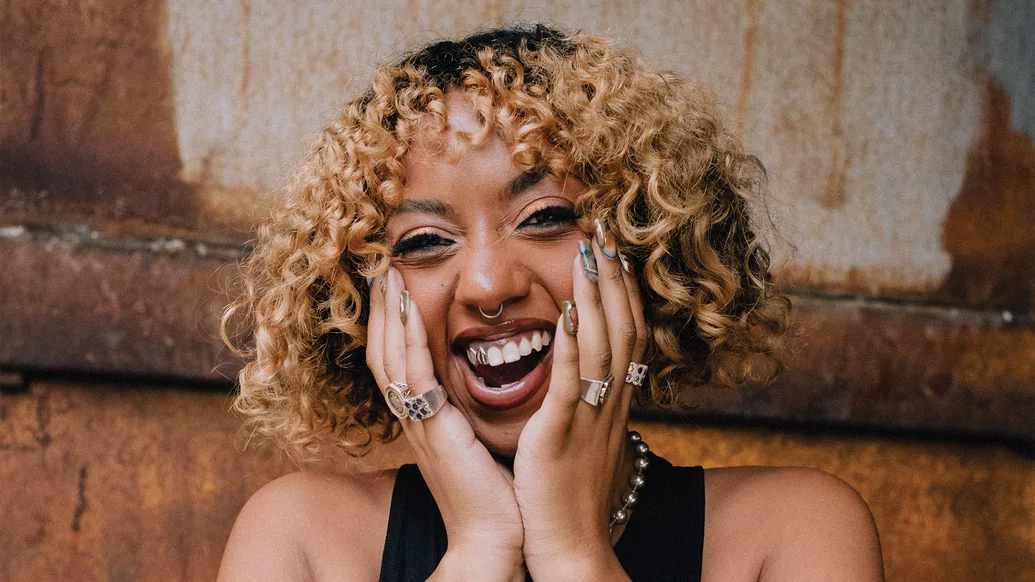
“For so long, I was trying to prove myself to those people. Now it’s whatever — I'm doing my own thing, I've got my own parties. And the crowds that come to my parties are so open-minded and diverse — people literally come with their mums. The more we create our own spaces, the more we feel welcome.”
As she’s progressed, her presence in the music industry has become a beacon for others too. In the early days of the genre, it wouldn’t be uncommon for jungle and garage DJs to play to majority Black crowds, particularly at ragga jungle raves, where attendees would be courted by reggae and dancehall samples, heavy bass and dubby sounds. But despite being pioneered by Black crews, DJs and musicians, it is no secret that the dance music industry has become increasingly whitewashed, with a lack of awareness of its Black origins and a slowly dwindling presence of Black artists in prominent positions when being taken up by the mainstream.
“That's where some ignorance comes into play with, like, ‘Black music’ versus ‘non-Black music’. Black people and Black music can be so marginalised and categorised,” she says, face visibly furrowing in frustration. “There's a stereotype of what Black people like to listen to, and it's absolute rubbish! Just because you're Black, doesn't mean you don't have different interests from everybody else. Just because something is popular in Black culture, doesn't mean everybody in Black culture likes it.”
We point to streaming as an example, where Black electronic music genres like house, jungle, garage and techno are often categorised as ‘Dance Music’, but not as ‘Black Music’. “There's a lot of education to be done on dance music, especially British dance music,” she continues. “People think I'm a drum & bass artist, and I know it might seem like such a silly difference, but it's actually a really significant difference between the music and culture of drum & bass, and that of jungle. Jungle fed into drum & bass, and into garage and into grime. I think if more people had that awareness, then maybe it wouldn't be categorised as just dance music.”
The 2022 MOBOs (Music Of Black Origin) were a watershed moment in Nia’s commitment to referencing that history. Despite previously awarding performers in Jungle, Dance, DJ and Garage categories, by the early 2000s the awards faced widespread criticism for their dissolution, with regular callouts from UK electronic music artists such as Loraine James, SHERELLE and Goldie, himself the winner of Best Album at the inaugural 1996 ceremony.
Nia published an open letter to the organisation, stating that its “lack of support has been massively regressive for the Black community and for representation of these genres and the artists operating within them”. The letter, along with the compounded movements of Club BEMA (the Black Electronic Music Association formed by industry professionals Hannah Shogbola, Heléna Star, JAGUAR and NIKS) saw the Best Electronic/Dance Act category return in 2022 — with Nia selected as winner.
“It wasn't about myself winning an award at all,” she stresses. “To be honest, I thought that they wouldn't want to give it to me after my outspokenness! That wasn't my goal or intention. I was just so confused as to why it didn't exist. Dance music is a part of Black culture; it literally came from Black gay men in America.”
She points to others in the electronic music scene, such as JAGUAR and SHERELLE, who she describes as “an activist”, as being more impactful in moving the conversation forward than herself. “It was definitely a group effort; I give them more credit because they did a lot of the groundwork having those difficult conversations.”
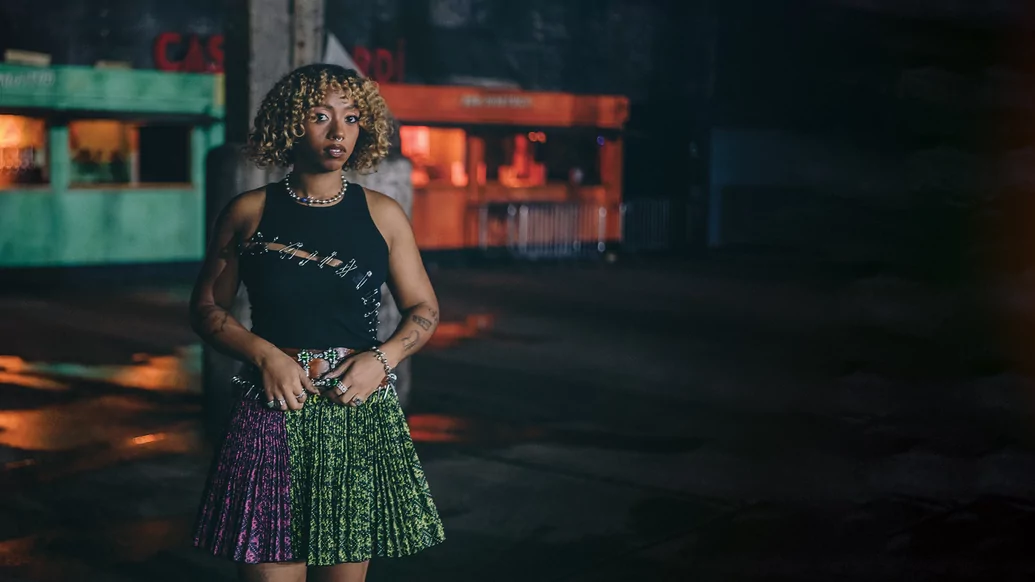
Still, Nia has been instrumental in carving out a space for others like herself in the electronic community. She herself has seen the benefits of community support firsthand; a recipient of the EQ50 mentorship providing access for women and non-binary people in jungle and drum & bass, she was mentored by DJ Flight, a fellow Black woman in the scene. Since then, Nia has discussed at length a desire to see more Black women celebrated within a music culture they have helped spearhead, and has a resounding ‘Black girls to the front’ ethos at her parties, which she says now sees multiple young Black women coming to her events, feeling comfortable enough to have a space in the rave.
She is curating an environment far removed from the days of being baulked at in raves. “Being a woman is tough in the work environment in general, and being a Black woman in dance music is tough,” she says. “But if there are people that are ignorant to people like me, I don't even want to be around you.
“For so long, I was trying to prove myself to those people,” she continues. “Now it’s whatever — I'm doing my own thing, I've got my own parties. And the crowds that come to my parties are so open-minded and diverse — people literally come with their mums. The more we create our own spaces, the more we feel welcome.”
It’s exemplified in her recent single ‘Bad Gyalz’, the track serving as a celebration of the multiplicity of women and non-binary people, as well as a rallying cry for them to simply enjoy the rave: “Big love to all mi rude gyal / Let me see you come through, gyal,” she sings.
If her trajectory is anything to go by, Nia will go much further in the quest to create spaces for herself and others. In an unbelievably short career so far, and at an equally strikingly young age, Nia has harnessed self-belief and true grit to advance beyond her beginnings, even if she is too humble to acknowledge it. When we ask whether she feels healed from what she has had to overcome, she pauses for a moment. “I don't know if I'm healed, but I'm definitely trying to heal,” she starts. “I really struggle to talk about my emotions. I've done therapy like 10 times; like, I'm not doing therapy again because I've just done it so many times! It sounds so cringe, but honestly, I feel like I'm healing from my music. That's why I don't do it anymore; I'd rather put it in music. That gives me so much release.
“I'm trying to rewrite my story,” she continues. “You can't choose what situation you have in life. But I think just because you're from a certain situation, doesn't mean that that’s who you are, or always will be. That thought has always given me hope.”



